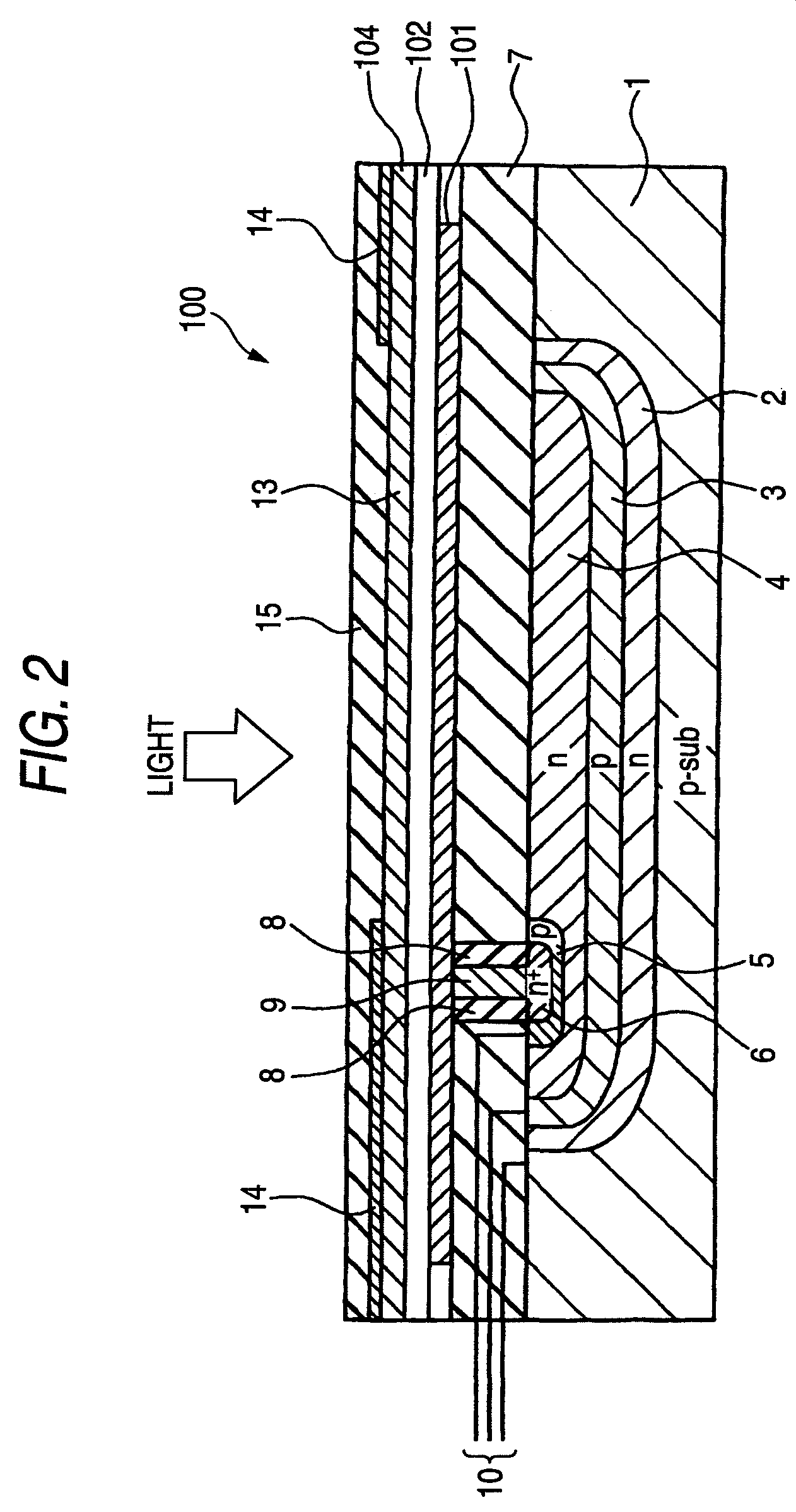Photoelectric conversion element including a mixed layer of a P-type organic semiconductor and a fullerene, method for producing the same, and solid-state imaging device using the same
a technology of photoelectric conversion element and mixed layer, which is applied in the direction of sustainable manufacturing/processing, television systems, radio frequency controlled devices, etc., can solve the problems of reducing the efficiency effect and difficulty in applying the technique of improving photoelectric conversion efficiency, so as to improve photoelectric conversion efficiency and suppress the generation of dark current
- Summary
- Abstract
- Description
- Claims
- Application Information
AI Technical Summary
Benefits of technology
Problems solved by technology
Method used
Image
Examples
first embodiment
[0069]FIG. 1 is a schematic cross-sectional view showing a fundamental structure of a photoelectric conversion element of a first exemplary embodiment of the invention.
[0070]The photoelectric conversion element shown in FIG. 1 includes a substrate S, a lower electrode 101 (pixel electrode) formed on the substrate S, an electron-blocking layer 105 formed on the lower electrode 101, a photoelectric conversion layer 102 formed on the electron-blocking layer 105, a hole-blocking layer 103 formed on the photoelectric conversion layer 102, and an upper electrode 104 (opposing electrode) formed on the hole-blocking layer 103.
[0071]The photoelectric conversion layer 102 includes an organic material having the ability of photoelectric conversion. As the organic material, various organic semiconductor materials used in, for example, photosensitive materials for electrophotography may be used. Of them, materials having a quinacridone structure or organic materials having a phthalocyanine struc...
second embodiment
[0102]FIG. 2 is a cross-sectional schematic view showing one pixel of a solid-state imaging device for illustrating a second exemplary embodiment of the invention. In FIG. 2, the same reference numerals and signs are applied to the same structural members as those in FIG. 1.
[0103]In a solid-state imaging device 100, a number of pixels shown in FIG. 2 are arranged on the same plane in an array pattern, and data on one pixel of an image data can be generated by a signal obtained from the one pixel.
[0104]One pixel of the solid-state imaging device shown in FIG. 2 includes: a p-type silicon substrate 1; a transparent insulating film 7 formed on the p-type silicon substrate 1; a photoelectric conversion element of the structure described in the first embodiment including a lower electrode 101 formed on the insulating film 7, a photoelectric conversion layer 102 formed on the lower electrode 101, a hole-blocking layer 103 (not shown) formed on the photoelectric conversion layer 102, an el...
third embodiment
[0112]In this embodiment, two photodiodes are not stacked in the silicon substrate 1 shown in FIG. 2, but are arranged in the direction perpendicular to the incident direction of light to detect two colors of the light in the p-type silicon substrate.
[0113]FIG. 3 is a cross-sectional schematic view showing one pixel of a solid-state imaging device for illustrating a third exemplary embodiment of the invention. In FIG. 3, the same reference numerals and signs are applied to the same structural members as those in FIG. 1.
[0114]One pixel of the solid-state imaging device 200 shown in FIG. 3 includes a p-type silicon substrate 17, and a photoelectric conversion element of the structure described in the first embodiment including a lower electrode 101 formed above the p-type silicon substrate 17, a photoelectric conversion layer 102 formed on the lower electrode 101, a hole-blocking layer 103 (not shown) formed on the photoelectric conversion layer 102, an electron-blocking layer 105 (no...
PUM
 Login to View More
Login to View More Abstract
Description
Claims
Application Information
 Login to View More
Login to View More - R&D
- Intellectual Property
- Life Sciences
- Materials
- Tech Scout
- Unparalleled Data Quality
- Higher Quality Content
- 60% Fewer Hallucinations
Browse by: Latest US Patents, China's latest patents, Technical Efficacy Thesaurus, Application Domain, Technology Topic, Popular Technical Reports.
© 2025 PatSnap. All rights reserved.Legal|Privacy policy|Modern Slavery Act Transparency Statement|Sitemap|About US| Contact US: help@patsnap.com



